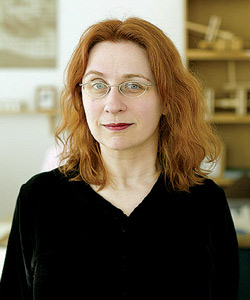Elegy for Isabella Blow November 2nd through December 29th. Printworks Gallery, 311 W. Superior St.; 312-664-9407.

|
The success of Audrey Niffenegger’s 2003 literary début, The Time Traveler’s Wife, made the Chicago writer a household name. But in the exponentially smaller circles that follow printmaking, her artwork has been known for two decades. On an early fall day—the same week the movie version of The Time Traveler’s Wife began filming in Toronto—Niffenegger stood among the unfinished prints, drawings, and paintings in her Northwest Side studio and talked about making art, writing, and her upcoming exhibition on the British fashion icon who died last spring.
Who was Isabella Blow? She was an influential fashion editor, but she was also a muse. She discovered Alexander McQueen. She combined the British aristocracy thing with the fashion thing with the “I don’t care what anybody thinks; I’m going to wear chain-mail” thing, and she was just extraordinary. I’m not making art that depicts her; I’m riffing off her aesthetic and making things she might like.
As you work on this exhibition, you’re also writing your second novel. How do these projects inform one another? I was giving a reading a while back, and someone asked me to talk about the fact that all of my work is about loss. And it suddenly occurred to me, standing in front of all those people, that she was right. To me, death just seems really interesting. It is a completely common experience that none of us has had yet. In the book I’m writing right now, Her Fearful Symmetry, I kill the woman in the first sentence, and she spends the rest of the book being a ghost. I took up this idea for memorializing Isabella Blow very recently, but it was born out of five years of dwelling in this other mindset—this feeling of a ghost trying to get through to the rest of humanity.
Has all of the attention you received for The Time Traveler’s Wife affected the way you work? There’s a lot of pressure to do the same thing. If I write a sequel, you will know I have run out of money. The interesting thing is to do what you haven’t done before. For me, that’s much easier to do in the artwork; it’s easier to play visually.


